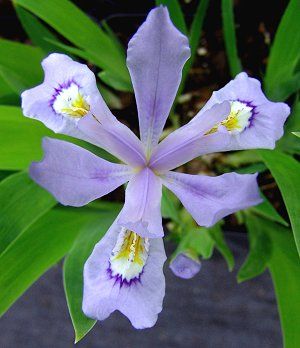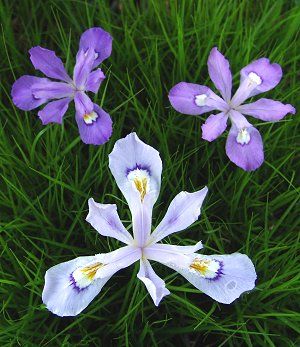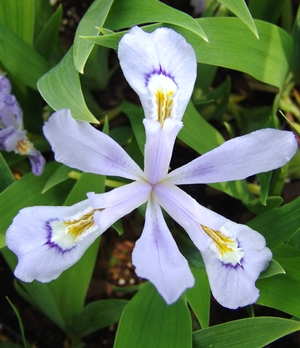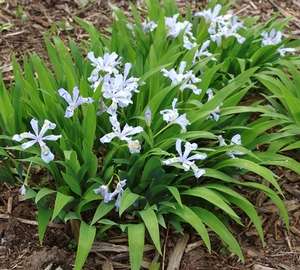Iris cristata 'Powder Blue Giant'
Common: dwarf crested irisIris cristata 'Powder Blue Giant' - 50 per flat
- Height: 6"-8"
- Spread: 12"-15"
- Spacing: 12"
- Hardiness Zone(s): 5-8


Iris cristata 'Powder Blue Giant' - 50 per flat



Considerably more robust than the species, this sweet giant boasts 3" flowers of delicate light blue with golden crests and deep blue accents. Vigorous and easy to grow!
Prefers rich, well-drained soils in full to partial shade. If grown in full sun, the soil must remain consistently moist. Benefits from the addition of lime and rich, organic materials. Is rhizomatous and can be propagated by division after flowering is done with a sharp spade or pulling apart entangled rhizomes (which actually give rise to healthier plants). Best used as a seasonal groundcover, in rock gardens, or added for woodland color.
Iris cristata 'Powder Blue Giant' is a superb form of our native deer-resistant Iris cristata, discovered by Samuel Norris (who created the first xPardancandas) of Owensboro, Kentucky, some 37 years ago in a 200-yard-long bank of Iris cristata in Litchfield, Kentucky. Iris cristata 'Powder Blue Giant' was registered and named by Joe Pye Weed Gardens, Massachusetts, in 1998. The light blue flowers, to 3" wide, are gigantic for this species...a hummingbird delight. This vigorously spreading form to 1' tall is a superb choice for a dry location in the woodland garden. - Plant Delights Nursery
The iris was said to have first been adopted as an emblem in the 6th century by King Clovis of the Franks, after a clump of yellow flag iris had shown him where he could ford a stream and escape a superior force of Goths. It was revived as an emblem, the Fleur-de-Louis, in 1147 when Louis VII of France set off on the ill-fated second crusade. The emblem has been used since 1180 as a badge of the kings of France, and although referred to as the "Lily of France," was probably I. pseudocorus. The iris has been adopted by many kings since and has represented the birth of Christ in many classical paintings. Not to be outdone, even the Canadian Province of Quebec uses the Fleur-de-lis on her provincial flag. Countries of the world seem unabashedly attached to the beauty of the iris and in any one garden, English, Spanish, Dutch, Persian, German, Californian, Japanese, Lousiana, Pacific Coast, and Siberian irises may be found. - Herbaceous Perennial Plants, Allan Armitage